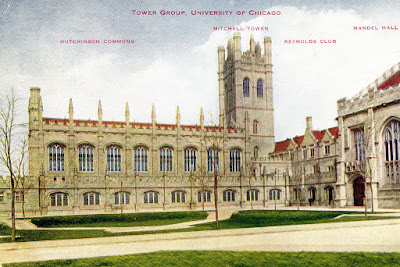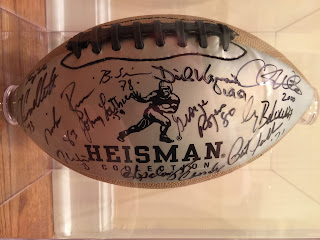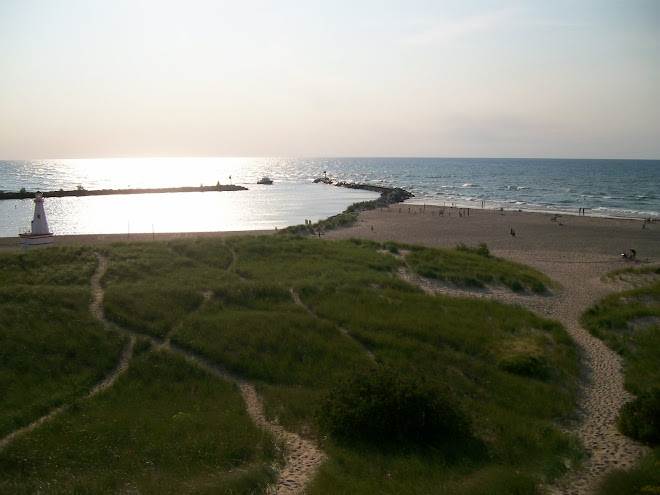From a guidebook by Francesco Valcanover; "In an open scenic illusionism, the shepherds below present their gifts with impassioned and joyous gestures. They are counterpointed by the light and shadow created by the brightness from outside; above, main and secondary figures taking part in the divine event take on attitudes of conscious, almost solemn participation and are dazzled by the light which streams through the cracks between the wooden beams of the humble barn. The two different spiritual moments are underlined also by the different colour quality; without breaking the continuity the lower part is continuously struck by reverberations and reflections and at the same time carefully and realistically evokes the animals in the stall, the brightly-colored peacock, the humble tools; the upper part is calmer and more relaxed although the wide chromatic background painting is strengthened by sudden, flashing rays of light."
Thursday, December 24, 2015
The Adoration of the Shepherds
The Adoration of the Shepherds, by the
wonderful Venetian artist Jacopo Tintoretto; on display in the
incomparable treasury of art that is the Scuola Grande di San Rocco in Venice.
From a guidebook by Francesco Valcanover; "In an open scenic illusionism, the shepherds below present their gifts with impassioned and joyous gestures. They are counterpointed by the light and shadow created by the brightness from outside; above, main and secondary figures taking part in the divine event take on attitudes of conscious, almost solemn participation and are dazzled by the light which streams through the cracks between the wooden beams of the humble barn. The two different spiritual moments are underlined also by the different colour quality; without breaking the continuity the lower part is continuously struck by reverberations and reflections and at the same time carefully and realistically evokes the animals in the stall, the brightly-colored peacock, the humble tools; the upper part is calmer and more relaxed although the wide chromatic background painting is strengthened by sudden, flashing rays of light."
From a guidebook by Francesco Valcanover; "In an open scenic illusionism, the shepherds below present their gifts with impassioned and joyous gestures. They are counterpointed by the light and shadow created by the brightness from outside; above, main and secondary figures taking part in the divine event take on attitudes of conscious, almost solemn participation and are dazzled by the light which streams through the cracks between the wooden beams of the humble barn. The two different spiritual moments are underlined also by the different colour quality; without breaking the continuity the lower part is continuously struck by reverberations and reflections and at the same time carefully and realistically evokes the animals in the stall, the brightly-colored peacock, the humble tools; the upper part is calmer and more relaxed although the wide chromatic background painting is strengthened by sudden, flashing rays of light."
Labels:
Arts and Entertainment,
Christmas
Wednesday, December 9, 2015
The First Heisman & Jay Berwanger of UChicago, 80 Years On
 |
| Jay Berwanger |
His Heisman Trophy is on display at the University of Chicago. I clipped a photo of it from the UChicago website; I don’t think they’ll mind.
Speaking of the Heisman, at a school charity auction a few years ago I had the good fortune to win a football signed by 20 Heisman Trophy winners, donated by Johnny Lattner, the 1953 Heisman winner and star at Notre Dame and Fenwick High School in suburban Chicago Oak Park. Lattner's signature is just to the left of the figure of the player.
Labels:
Sports,
University of Chicago
Tuesday, December 8, 2015
My UChicago Haunts (Part 1)
This year the University of
Chicago is celebrating the 125th anniversary of its founding. In commemoration of that great and special (and
unusual) place, home of the “life of the mind,” where exasperated shouts of
“define your terms” bounce between the limestone Gothic buildings, where
secondary sources are third class citizens, where the graffito “F-you – Newton”
is coupled with “F-your vicinity – Heisenberg,” and where when hurrying to the
library on a brisk fall Saturday afternoon a driver pulls over to ask, in all
earnestness, “where’s the Plato lecture,” as if you’d know just which one.
Reminiscing on some well-travelled
campus haunts:
Hitchcock Hall is an unusual building, inside and out. Completed in 1902 as a men’s residence hall,
it has Gothic elements encased in prominent horizontal lines enclosing five
vertical sections, four stories each, connected only by cross corridors in the
basement and on the quad side a ground floor, unheated cloister. It was designed, writes campus historian Jay
Pridmore, as “a merger of Prairie School and Gothic Revival.” Very UChicago – cross-discipline
fertilization. How
many other Prairie-Gothic buildings can one name on the National Register of Historic Places?
 |
| Hitchcock Hall (Snell Hall in more traditional Gothic design is adjacent to the right) |
Hitchcock Hall is a place
where once upon a time, after yet another intense conversation around a greasy
table in the basement kitchen, someone would remark sardonically “well, another
raucous Saturday night at the U of C;” but also a place where, should anyone
try to leave such conversation, on the price of tea in China or carbon-carbon
double bonds, the plea “five more minutes” would invariably be heard.
Bartlett Gymnasium was a pretty neat, and historic, place. It once stood as the eastern part of the
Stagg Field complex, housing a big gym, offices for coaches, a large trophy
room with testaments of past Big Ten glories, and a locker room where attendant
Bill Dee would string a mean Hornet squash racket for a young college freshman. It was decorated with large hand-painted
murals and most notably over the entrance a large, multi-paneled stained glass
window depicting a scene from Ivanhoe “in which the knight is crowned for his
triumph in a legendary twelfth-century tournament” (Pridmore). Build of very
solid limestone in the Gothic style, of course, with the same turrets and
battlements found on Stagg Field.
A place where I learned the
game of squash, which I played there for many years, and the place where I
would interview the athletic coaches for my short-lived small sports column in
the student newspaper The Chicago Maroon. In the twenty-first century, upon completion on
the edge of campus of a larger athletic center with a faddish, futuristic-look,
the convenient and centrally-located Bartlett Gymnasium building was turned into
a cafeteria. My oh my. |
| Hutchinson Commons, Mitchell Tower, a sliver of the Reynolds Club, and a corner of Mandel Hall (L to R) |
 |
| Hutchinson Commons; Portraits Fill the Walls Now |
My thin wallet preferred the
adjacent C-Shop, where, if flush with a few extra dollars from the
latest advance on a loan, my pals and I ate many a greasy hamburger rather than
cooking up a pot of cheaper spaghetti or gnocchi. We were glad to have a late night dining option
on campus. It looks now to have been
converted into a healthy-food sandwich, granola, and muffin shop, with a full
line of organic juices. Times have
changed.
 |
| Cobb Gate (Incorrectly named on the postcard) |
Finally, for now, Cobb
Gate merits a mention. It is the
south entrance (on 57th Street) first to Hull Court, with its complex
of biology buildings, and then to the main quadrangles. Traversed innumerable times in a typical
undergraduate’s stint, it certainly is a sight, a passageway beneath a massive
limestone archway covered with a bevy of gargoyles and other grotesque creatures
glaring down on passers-by, a fair warning that the University of Chicago isn’t
for the faint of heart.
Sunday, December 6, 2015
Saint Nicholas, the Christian Bishop Who Became Santa Claus, & Turkish Chutzpah
 |
| Desubleo: Saint Nicholas |
This I already knew: That Nicholas was known to freely give gifts,
often in secret, to the needy, and his practice became the basis for the
Christian custom of gift-giving at Christmastime; That somehow the practice of
gift-giving was moved, for most Christians, to Christmas Day; That the name Santa
Claus comes from the Dutch name “Sinterklaas,” which is some sort of linguistic corruption
of “Saint Nicholas.”
What I did not know was that
Nicholas was one of the bishops at the First Council of Nicaea and was such an
ardent defender of the “orthodox” Christian position on a point of Christology against
that of Arius that, according to legend, he punched Arius in the face. Nicholas was one of the signatories to the Nicene
Creed, a variation of which is still recited in many Christian churches today.
Most art work on St Nicholas seems to be in the Orthodox tradition, two-dimensional and unrealistic, but I came across an appealing painting on the subject by the 17th Century Flemish painter Michele Desubleo, who spent his career in Italy: “Saint Nicholas with the three school children and a Carthusian monk.”
Most art work on St Nicholas seems to be in the Orthodox tradition, two-dimensional and unrealistic, but I came across an appealing painting on the subject by the 17th Century Flemish painter Michele Desubleo, who spent his career in Italy: “Saint Nicholas with the three school children and a Carthusian monk.”
Nicholas died in 343 and was
buried in southern Anatolia. His tomb
became a popular religious site to visit.
About 700 years later, the area was threatened by the invasion of the Muslim
Turks. To protect the relics of St
Nicholas, some of his remains were whisked off to Bari in the heel of Italy. The rest were soon carried off
to Venice, a maritime culture especially drawn to the patron saint of sailors,
where a church in honor of Nicholas was built on the Lido, one of the islands in
the lagoon.
 |
| Church of San Nicolò al Lido, Venetian Lagoon |
An amusing epilogue: According to Wikipedia, in 2009
“the Turkish Government announced that it would be formally requesting the
return of St. Nicholas's skeletal remains to Turkey from the Italian government”
on the grounds that Nicholas’s remains “were illegally removed from his
homeland.”
So here we have it: the Muslim Turks, increasingly becoming
more religiously fundamental and even less-hospitable toward Christians, and
not all that long after slaughtering the Christian Armenians, and who as a people were not even living in Anatolia at the time of Nicholas, now are demanding the
seventeen hundred-year old remains of a Christian man who once lived in Anatolia
hundreds of years before Muhammad was even born. There’s a Yiddish word for this – chutzpah. St Nicholas was part of a Christian culture
in Anatolia that the Turks purposefully destroyed, but now the Muslim Turks want his dusty bones back presumably to promote Christian tourism.
I suspect the Turks will be waiting a long time, but if they are really
serious about the principle of returning old stuff to rightful owners they could start with a show
of their bona fides by returning to
Christians Hagia Sophia, once the greatest church in Christendom, and whatever holy artifacts survived the centuries of their wanton destruction. And, while they’re at it, why not return the
entire city of Constantinople? Now that would be a real show of good faith.
R Balsamo
Labels:
Arts and Entertainment,
Christmas,
History,
Islam
Subscribe to:
Posts (Atom)







